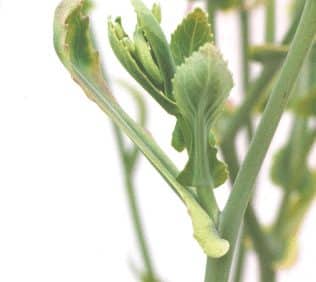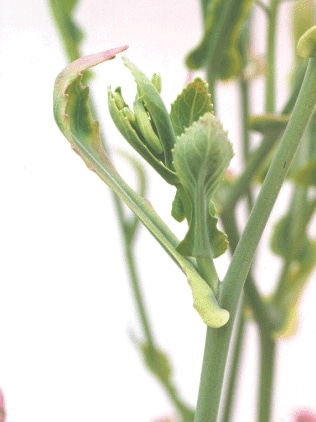Canola is a high sulphur-using crop. It needs 0.55 to 0.8 pounds of sulphur (S) per bushel of yield, and around 55% of uptake is removed with the seed.
Growers understand the need for S in canola, but more frequent production of canola and higher yields have been drawing down soil levels. Soil fertility expert Ross McKenzie estimates that at least 40% of soils across Western Canada are S deficient.
Soil S levels can vary year to year as sulphate-S is quite mobile in soil. Sulphate-S will leach with excess moisture. For this reason, sulphur is best applied annually in response to estimated crop needs in that year.
1. Soil test
Take separate samples for 0-6” and 6-24” (or ideally 0-6″, 6-12” and 12-24”). Soil S reserves in the top 6” are provided mostly from soil organic matter and crop residue. Below 6”, most S is in inorganic form often in the form of calcium sulphate (gypsum).
Soil with less than 10 lb./ac. in the top 6” is deficient and canola will often benefit from applied S — even if S levels at 6-24” depth are adequate. Soils with 10-20 lb./ac. in the top 6” are marginal and with more than 20 lb./ac. in the top 6” are adequate.
2. Rates
If soil S levels are below 10 lb./ac. at 0-6”, consider 10-20 lb./ac. of applied sulphate (40 to 80 lb./ac. of 21-0-0-24)
If soil S levels are below 40 lb./ac. for the entire 0-24” combined sample, consider 10-40 lb./ac. of applied sulphate. The lower the soil test, the higher the fertilizer rate.
3. Product
Use ammonium sulphate fertilizer (21-0-0-24) for spring applications and in-season applications if required to address an immediate need. Liquid ammonium thiosulphate is another option. Don’t use elemental S to correct an S deficiency. Elemental S (0-0-0-90 or 0-0-0-95) can be used in the fall as part of a building program, but often takes two to three years to convert the entire amount into a useable sulphate form.
Note that with a product such as S15, the sulphur component is split between sulphate and elemental S. When S15 is applied in the spring, 50% of the S is in elemental form will likely not be available to the crop in the year of application to influence yield. More on product choices.
4. Placement
Put sulphate outside the seed row. Sulphur is not needed for an early-season pop up. Adding ammonium sulphate to the seed row unnecessarily increases seedling risk, given that ammonium phosphate is already in the seed row.
5. Deficiency symptoms
Sulphur deficiencies tend to be more visually distinct than other nutrient deficiencies. With S deficiency, yellowing and leaf cupping tend to occur on new leaves first. At flowering, S deficiency will result in small pale-coloured flowers. This can occur in patches, and often on hilltops first. (More sulphur deficiency pictures.)
Canola Digest Science Edition 2014: Canola needs sulphur fertilizer
Canola Encyclopedia: Sulphur fertilizer management
Top dress tips for sulphur


